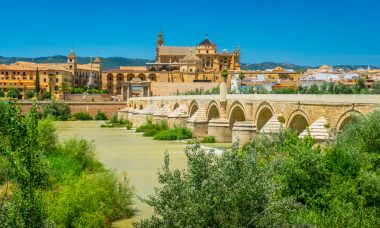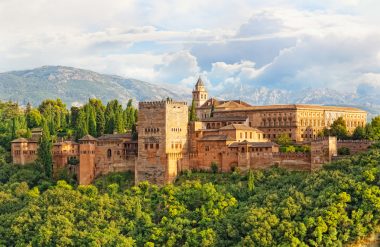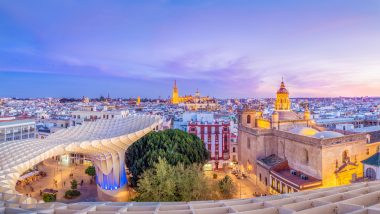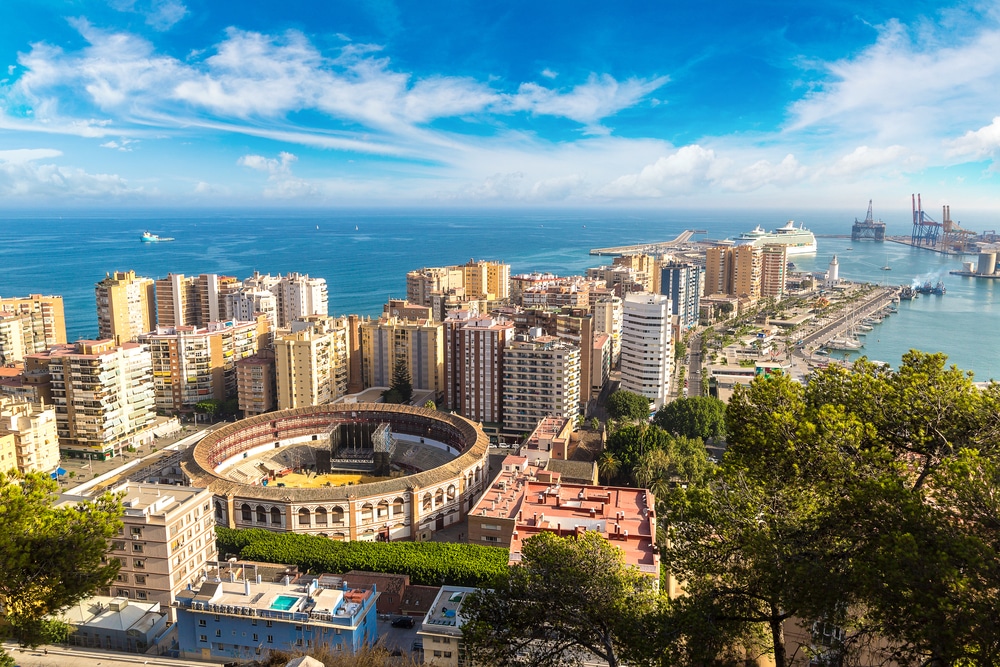It is said of Spain’s south that this region is the home of light. And in the churches of Andalusia, people pray with devotion and the awareness that they have a beautiful spot of earth to call their own: “On the eighth day of creation, the Lord shall have said, ‘Let me gather together all the beauties in this land.’ I want to give him beaches, peaks full of snow and fertile fields. May the sun shine there three hundred days a year.” He then created his masterpiece in Andalusia.
The people in this region are God-fearing, and when the fog lifts over the ancient walls of Casares in the early morning, it is not only the elderly who strike the cross of their deep-rooted faith. Knowing full well that they are blessed with the beauties of Andalusia.
Andalusia – History lives here

It is the land of wide horizons, cheerful festivals, proud castles and historic towns. In Andalusia, history is alive and it has taken on many faces over time. More than a millennium ago, Al-Andalus had many advantages over the European continent. This region in the south of the Iberian Peninsula was part of the Islamic Empire, where gifted architects and scientists created works for eternity. Anyone who walks through the historic royal palaces today, is enchanted by the fairytale castle of the Alhambra in Granada or approaches Cordoba via the Roman bridge that spans the Guadalquivir River, will get an impression of the splendour of this city of the caliphs. Because it has survived the times – despite an eventful history.
Several religions found a place under the roof of the Mezquita, the sublime mosque of Cordoba. The tangle of Roman columns and Moorish arches has been preserved, although in the 16th century, after the end of the Caliphate, a Christian church also found its way there. The new masters in the south of Spain understood this as a demonstration of their power. The splendour of the Orient is not only revealed in this impressive mosque in Cordoba, but also to a large extent in the park of the Alcácar Palace with its babbling fountains, playful staircases and secluded orange groves. The fascination of this largely unfaded UNESCO World Heritage Site has no end in this city.
At parting, the ruler wept

Eight hundred Moorish years have shaped the hills above Granada. This castle hill is one of the largest sights on the globe. With its unique “Court of the Lions”, the Alhambra and the King’s Hall “Sala de los Reyes”. The Moorish ruler is said to have shed a few tears when he had to leave his palaces high above Granada because the Catholic kings moved in there in 1492.
But the former oriental character of Granada is still revealed in the alleys of the old city. With their small shops and restaurants, where the hookah is served as a matter of course as always and where the smoked hams dangle from the ceiling. On a clear day, it seems that the snow-capped peaks of the Sierra Nevada are very close, although the roses are already blooming in the parks of the Alhambra.
It is said of the people of the south of Spain that they are characterized by an extraordinary quality: dignity and grace. Some even see in it the essence of the nobility. During the country’s great fiestas, including Jerez de la Frontera, where you can taste a delicious sherry, the Festival of the Riders is the highlight of the year. And it attracts many tourists from all over the world, who can hardly get enough of the rides in the style of the landlord.
Where Columbus found his final resting place

Seville presents itself as an extraordinary beauty by day and also by night. Two landmarks characterize the image of this city: the tower of the mighty cathedral, where the navigator Christopher Columbus found his final resting place, and the “Torre de Oro”. The “Giralda” of the central church was originally the minaret of a mosque before it was extended to a bell tower in 1560. When the bells ring in the cathedral at midnight, it can be assumed that the bishop is blessing the footballers of a successful team from Seville. If you visit this city and want to absorb the many faces of this metropolis with all your senses, you should opt for a carriage ride. Then the canal-lined palace in Plaza de Espana will be one of many destinations.
The old towns and romantic villages of Andalusia have shaped the image of the Spanish south. With flamencos and fiestas – and, if you like it, probably also with a visit to an arena of bullfighters. And if you want a few days of vacation from the stress of sightseeing after so much history, you will find it on Spain’s most popular coast – the Costa del Sol. At the latest there, the holidaymaker will understand why the Iberians speak of Andalusia as the “home of light”.


